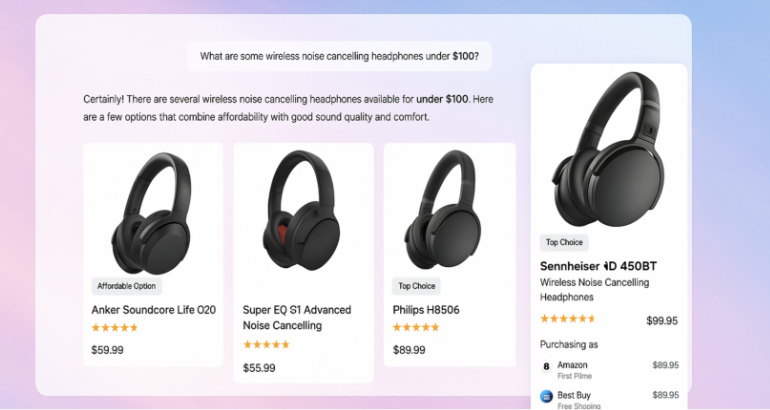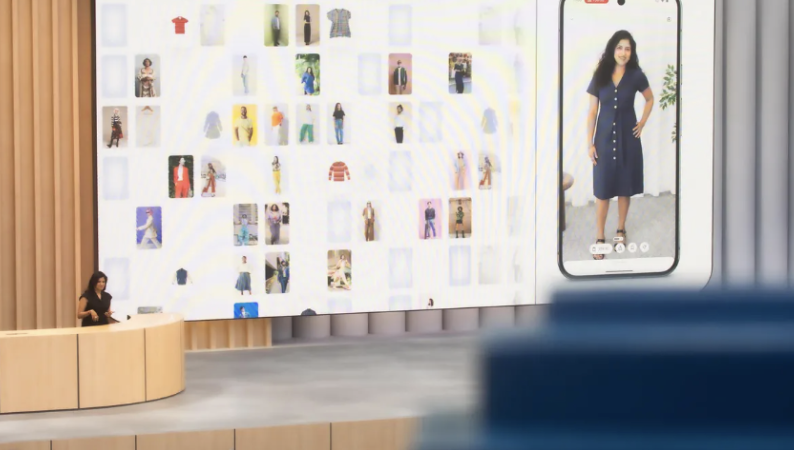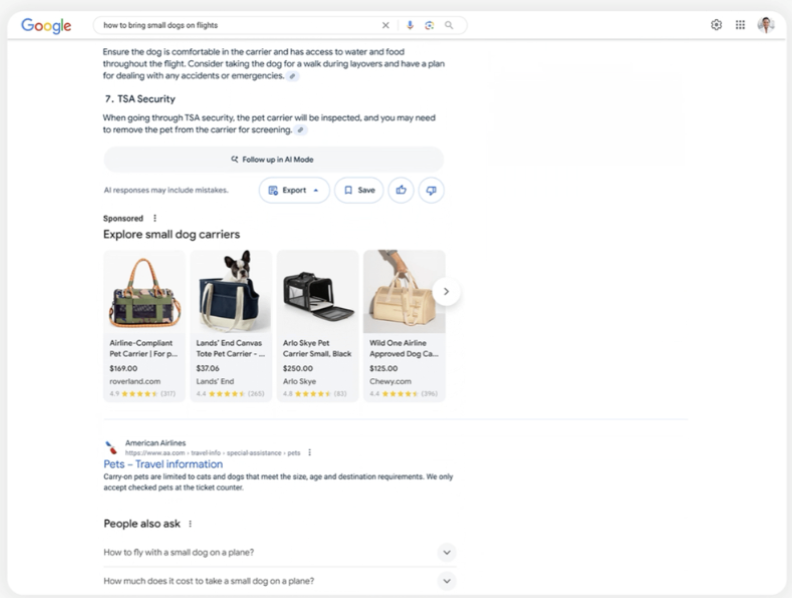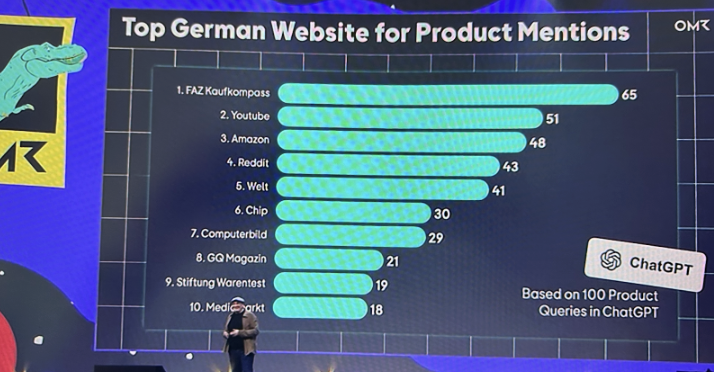Generative Engine Optimization (GEO) is becoming reality with Google’s AI Mode and ChatGPT’s shopping features – this article outlines how advertising, SEO, and affiliate marketing must adapt.
The fact that AI and LLM chatbots are changing the way people search for products and stores online has been apparent for quite some time and even if the numbers are still quite small compared to traditional searches, analyses show steadily increasing usage figures for bots for product-related searches.
However, many details about the “new search world” remained unclear until the end, including the question of how we as advertisers and agencies should specifically react to the new situation. The term “Generative Engine Optimization” (GEO) has emerged as a new discipline in digital marketing – albeit without knowing much about the specific characteristics of this discipline.
This has changed since the end of April and especially with GoogleIO in the penultimate week of May, and the picture has become a lot more concrete.
From the user’s point of view: AI First
In April 2025, OpenAI began integrating specific store or product recommendations into corresponding chat histories in ChatGPT. This will also include direct links to recommended stores or a price comparison directly as part of the chat.
Pic. 1 – Product recommendations incl. price comparison at ChatGPT, Source
At GoogleIO 2025, Alphabet has now announced how it will proceed with the topic on its platforms, i.e. primarily Google Search and within Gemini:
- “AI Mode” in Google Search: even without specifically opening Gemini, users will be able to start complex and conversational searches directly on google.com and receive AI-generated answers. This also includes product and shopping recommendations.
- In AI mode and under the AI summaries that already appear in many “classic” Google searches, Google will integrate paid ads.
- In the fashion sector in particular, Google is expanding the opportunities to advertise directly on the search: With the help of AI and a photo, users will be able to virtually try on items of clothing to find the most suitable item and then go directly to the relevant store.
Pic. 2 – Live demo of the new “try-on function” at GoogleIO 2025, Source
Users will therefore no longer have to actively decide to search using AI, but the familiar Google search environment will use AI even more extensively than before to generate product and shopping recommendations.
From an advertiser’s point of view: Everything new? Apparently not!
From the information that has become known in recent days and weeks, a familiar picture emerges: in the new world of AI shopping, we will also have to deal with organic results and paid placements.
Organic results are those where the respective LLM comes to the conclusion, based on the data publicly available online, that our service or product actually best represents the use case discussed with the user. So: According to the chatbot’s “knowledge”, our trampoline best matches the requirements from the chat history, our cell phone tariff is the most favorable for the user behavior outlined above.
And via paid ads, our offer appears in AI-supported search results such as AI Overviews if the bids and settings in the provider’s respective Merchant Center are a good fit for the topic of the chat.
In principle, this is the same breakdown as we have seen for decades in connection with the search results pages of well-known search engines.
The usual tools…
The familiarity continues for the time being: in order to achieve organic rankings within the AI-generated responses, it is important to make all information about the brand, store and product on the publicly accessible internet as detailed and robotically comprehensible as possible. The principles of SEO therefore also apply to GEO. Your own website, your own online store remains (at least as things stand) an indispensable data authority on which information must be provided in a detailed, structured and easy-to-read manner. Off-page criteria are also of great importance, above all, of course, user ratings and test reports, etc.
Working with product data feeds also remains extremely important – and not just in the fashion sector. ChatGPT is in the process of rolling out a merchant center that online retailers can use to make their feeds available to the chatbot (currently in beta testing for the US market). This means that specific product information can be stored directly and stores that provide this data will certainly have an advantage over others that do not yet do so. The new “try on” function in Google Shopping described above will also benefit from first-class product data feeds. It can be assumed that Google will communicate requirements for the feeds in the short term, which will then have to be met quickly. So the applications are new, but the data feed as the carrier of these new features is not.
And now paid ads are coming into play – first with Google. OpenAI has not yet provided any information on whether there will also be clearly defined “paid results” in ChatGPT. However, it is indeed difficult to imagine that this source of income and proven method of monetization will be permanently abandoned. And of course it is a proven method, namely SEA. Google has confirmed that the paid placements in AI results can be booked and controlled via GoogleAds; they will become part of the existing ad organization and optimization.
Pic. 3 – Sponsored Ads under an AI summary on Google on the topic “Transporting dogs on airplanes”, Source
On the surface, it remains the familiar playing field of SEA and SEO and everything that goes with it.
… but many new rules
As soon as we get into the details, however, we are faced with a lot of new features.
ChatGPT searches the web with its own search bot, but also uses data from Bing, among others – no wonder, as Microsoft is a major investor in OpenAI. What is particularly interesting here is that not only the organic visibility on Bing plays a role here, but also paid placements on Bing and in the Microsoft universe can direct the bot to relevant information and thus influence the relevance in product recommendations.
SEO and also SEA in relation to Bing suddenly take on a new meaning in addition to the existing direct influence on traffic and conversions on your own web store.
The ChatGPT searchbot (and those of other LLMs) do not normally read JavaScript. This detail and many others must be taken into account in SEO if you want to provide the bot with sensible information.
The important role of affiliate marketing and affiliate content for the organic hits in the LLMs is also very interesting. This is of course obvious: product descriptions, test reports and user comments on price and product comparison portals such as Idealo or the FAZ Kaufkompass, on blogs and magazines such as Chip or Computerbild are the perfect fodder for the LLMs to understand offers and products in even more detail and the quantity of finds provides an indication of the relevance of the brand or store. Here, too, we see an increase in the relevance of the affiliate marketing channel beyond the direct impact on your own online store.
Pic. 4 – Analysis of the most frequently mentioned sources of information in product recommendation chats in ChatGPT, Source: OMR Keynote “State of the German Internet”, Roland Eisenbrand
The extent to which these new factors will ultimately influence the number of visitors to the store – especially in combination with the interactions with existing traffic flows – will be one of the very exciting developments in the near future, which will have to be observed individually for each store and managed in the best possible way.
Most people will probably be looking most closely at GoogleAds, because, as explained, this will also be used to control the placements in the AI results environment (in Google) in future. PMax will therefore become even more important, that seems certain. Broad match and long-tail keywords will receive a new set of KPIs by which they will be measured. There will be a number of changes here.
Conclusion: Take action now!
Even if the findings and announcements of the last few weeks are certainly not the end of the development of this ecosystem, they do mark an important turning point. For the first time, shopping-related results are now actually live or at least announced in concrete terms – and no longer just something that everyone expects to happen. And there is concrete information on how these rankings can be influenced.
There is a lot to learn in the coming period – previous best practices will be thrown out the window and new KPIs will take center stage. But we are used to that in these disciplines.
And even if the information from the last few weeks does not yet allow us to provide clear answers to every detailed question, the priorities are clearly outlined. As an advertiser, now is the perfect time to react and set the course in SEO, SEA and affiliate marketing, among others.
Uncertainties? Talk to us and our team!
We are already actively guiding many clients through these changes – with in-depth experience in all relevant disciplines such as SEA, SEO, affiliate marketing and feed management – and of course data and AI consulting are part of Artefact’s DNA. Thanks to our close cooperation with all major platforms, we always have our finger on the pulse of developments and can quickly translate new requirements into effective strategies.
Let’s grab a coffee. We’d love to discuss how these changes specifically impact your business and how we can navigate this exciting new era together. Send me a message on LinkedIn.
 BLOG
BLOG

